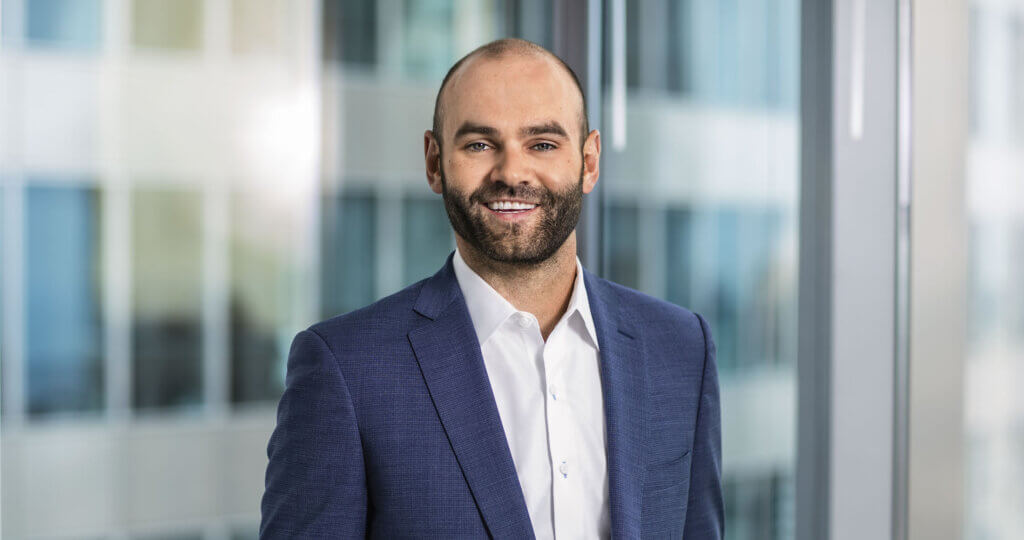Oakmark Equity and Income Fund – Investor Class
Average Annual Total Returns 06/30/17
Since Inception 11/01/95 10.24%
10-year 6.49%
5-year 9.30%
1-year 17.12%
3-month 1.70%
Gross Expense Ratio as of 09/30/16 was 0.79%
Past performance is no guarantee of future results. The performance data quoted represents past performance. Current performance may be lower or higher than the performance data quoted. The investment return and principal value vary so that an investor’s shares when redeemed may be worth more or less than the original cost. To obtain the most recent month-end performance data, view it here.
Quarter Review
Although the June quarter superficially appeared to extend trends that emerged after the presidential election, a more careful examination shows material changes in the landscape. Perhaps most striking has been the flattening of the yield curve. The yield curve simply plots the interest rates of fixed income securities with equal credit quality but differing maturities at a specific moment in time. Investors most commonly refer to the yield curve relative to U.S. Treasury issues, given that market’s depth and breadth. The U.S. Federal Reserve (the Fed) heavily influences the short end of the Treasury yield curve. During the past quarter, the Fed caused the Fed Funds rate (the shortest term rate) to increase by 25 basis points or ¼%. The longer end of the yield curve did not follow the move upward, however, resulting in the flattening mentioned above.
Former Fed Chair Alan Greenspan, observing a similar phenomenon 12 years ago, called this a “conundrum.” Historically, a flattening yield curve has often been a harbinger of impending economic deceleration, and some macro investors take that position now. Others argue that historical precedent carries little weight today given the unique features of the current environment, particularly the minimal interest rates available in European or Japanese fixed income instruments. Still another explanation is that entities with very long duration liabilities are struggling to populate their portfolios with similarly long duration assets, meaning that strong demand for longer maturity assets puts a cap on their rates. Our perspective is that interest rates set the price for money and that money is priced too cheaply at today’s prices. We continue to maintain a low-risk posture in the Fund’s fixed income allocation, although this was not helpful to the Fund’s relative results this past quarter.
For the equity market in the quarter, volatility remained low, but relative performance shifted to favor growth companies. Large capitalization issues outperformed small, with technology leading the way until the end of the quarter. Remember the FANGs (Facebook, Amazon, Netflix and Google) that dominated equity market returns in 2015? In this year’s second quarter, a new acronym was coined: FAAMG (Facebook, Amazon, Apple, Microsoft and Google1). Through much of the quarter, the FAAMGs accounted for a substantial proportion of the S&P 500’s return. We believe that this occurred as investors concluded that the new administration would be unable to pass business-friendly legislation, so they moved toward dependable growth names.
The Equity and Income Fund earned 1.7% in the quarter, while the Lipper Balanced Fund Index, the Fund’s performance benchmark, gained 2.5%. For the calendar six months, the Fund returned 5.9%, compared to 6.8% for the Lipper. The Fund’s nine-month fiscal year return was 11.2%, compared to 7.5% for the Lipper. The annualized compound rate of return since the Fund’s inception in 1995 is 10.2% while the corresponding return to the Lipper Index is 6.9%.
Nestlé, Oracle, UnitedHealth Group, FNF Group and Citigroup led the list of contributors to return for the quarter. The largest detractors were Foot Locker, Kate Spade, National Oilwell Varco, Baker Hughes and Arconic. The common denominator among these names was weakness in the retail and energy sectors, which has been a recurring theme recently. Retail struggled with the disruptive evolution from the traditional brick-and-mortar channel to e-commerce. For energy, the price of oil declined significantly in the quarter, causing a commensurate drop in stocks in the industry.
In terms of acquisition activity, Kate Spade agreed to a merger with Coach during the quarter but at a price that disappointed investors, including ourselves. (We discuss this in more depth later in the letter.) The Fund benefited from a more attractive acquisition outcome in the quarter for Fund holding VWR, a distributor of laboratory equipment and supplies.
For the calendar six months, Oracle, Nestlé, Philip Morris, Bank of America and TE Connectivity contributed most while Foot Locker, Baker Hughes, National Oilwell Varco, Kate Spade and Arconic were the biggest detractors. For the nine months of the Fund’s current fiscal year, Bank of America, Oracle, TE Connectivity, UnitedHealth and General Motors led the contributors’ list, while Foot Locker, CVS Health, National Oilwell Varco, Arconic and HSN detracted most.
Balanced Fund/Target Date Fund?
Balanced funds—i.e., funds that mix different asset classes such as stocks and bonds—have been part of the investing landscape for scores of years. Historically, they were seen as the investing answer to investors seeking a mix of growth and income but with buffered volatility. Over the past few decades, the investment management industry has been creative in new product development, including in this area. Target date funds emerged in the 1990s as an alternative to balanced funds, particularly in retirement accounts. Target date funds remove the asset allocation decision from the investor. Instead, these funds automatically adjust their asset allocation over time, based on the investor’s age or anticipated retirement date. Note, however, that this automation also takes the allocation decision away from the portfolio manager, since the fund mechanistically reallocates away from equities as time passes.
Although target date funds are conceptually appealing, in our opinion the market environment will determine their ability to meet the needs of their investors. In a normal environment, the “glide path”—or the transition from equities to bonds—can make sense. As investors near retirement, they want less risk, which fixed income securities typically provide. The problem arises when fixed income’s riskiness is above normal, as we believe it to be today. One measure of potential riskiness is duration, which measures how much interest rate changes will affect the price of a security. Higher durations imply greater interest rate sensitivity, which can mean that the risk of a loss is increased. Today, fixed income durations are very high across the entire spectrum of issues, a function of historically low interest rates. In the circumstance of someone who will be consuming their retirement account over time, the risk is that he or she will be selling supposedly safe fixed income assets at a loss should rates normalize to historic averages.
A very recent paper published by the University of Waterloo compares target date funds to basketball players who shoot the ball in an identical fashion, regardless of where they are positioned on the court. “The player is following a deterministic process, not focused on an end goal (sinking a basket),” the authors write. “In contrast, a player following an adaptive strategy will shoot at different angles and velocities, depending on where he is in relation to the basket, always keeping in mind that the goal is to sink the basket.” Although the “adaptive strategy” that the authors elaborate differs from that which we employ in the Equity and Income Fund, the general concept is the same. We invest in the most attractively valued assets, depending on the environment, and by doing so, we attempt to buffer the risk of material loss of capital. We believe that this approach has stood the test of time. Perhaps time will prove that target date funds are also a valuable addition to the investing landscape, but for now we hope that investors understand their risks as well.
Transaction Activity
The Fund’s overall asset allocation ended the quarter little changed from the previous report. During the quarter, we initiated new positions in CommScope Holding Company (COMM) and eliminated the Kate Spade holding after the merger agreement with Coach was announced. CommScope is a leading provider of infrastructure equipment for wired and wireless communications networks. Increasing requirements for capacity and speed across data, video and voice networks should drive low- to mid-single digit organic growth at the company. We believe the management team has shown themselves to be excellent operators with a history of strong revenue and earnings growth and a track record of successful merger integrations. The company is ahead of schedule in realizing synergies from its recent acquisition of Broadband Network Solutions (BNS) from TE Connectivity. CommScope businesses generate significant cash flow, and the company is rapidly paying down debt. Trading at a P/E in the low teens and at a discount to private market value, this high-quality company is selling at a very attractive price in our view.
As previously stated, Kate Spade agreed to a merger with Coach at an acquisition price that we found disappointing and below what we considered fair value. It may be that we were simply wrong in our assessment of the franchise’s worth, but we think that the poor retail environment worked to degrade the sales process and produced a non-optimal outcome.
As always, we thank our shareholders for entrusting their assets to the Fund and welcome your questions and comments.
1Alphabet is the parent company of Google.
The securities mentioned above comprise the following percentages of the Oakmark Equity and Income Fund’s total net assets as of 06/30/17: Facebook, Inc. 0%, Amazon.com, Inc. 0%, Netflix, Inc. 0%, Alphabet, Inc. 0%, Apple Inc. 0%, Microsoft Corporation 0%, Nestlé ADR 3.1%, Oracle Corp 3.6%, UnitedHealth Group, Inc. 2.6%, FNF Group 1.8%, Citigroup, Inc. 2.2%, Foot Locker, Inc. 1.8%, Kate Spade & Co. 0%, National Oilwell Varco, Inc. 1.2%, Baker Hughes, Inc. 1.3%, Arconic, Inc. 0.9%, Coach, Inc. 0%, VWR Corp. 0.7%, Philip Morris International, Inc. 2.3%, Bank of America Corp. 4.9%, TE Connectivity, Ltd. 3.4%, General Motors Co. 4.5%, CVS Health Corp. 2.5%, HSN, Inc. 0.2% and CommScope Technologies LLC 0.3%. Portfolio holdings are subject to change without notice and are not intended as recommendations of individual stocks.
Click here to access the full list of holdings for the Oakmark Equity and Income Fund as of the most recent quarter-end.
The S&P 500 Total Return Index is a market capitalization-weighted index of 500 large-capitalization stocks commonly used to represent the U.S. equity market. All returns reflect reinvested dividends and capital gains distributions. This index is unmanaged and investors cannot invest directly in this index.
The Lipper Balanced Fund Index measures the performance of the 30 largest U.S. balanced funds tracked by Lipper. This index is unmanaged and investors cannot invest directly in this index.
The quoted passage is taken from a June 8, 2017 paper titled, “Target Wealth: The Evolution of Target Date Funds” by Peter A. Forsyth, Kenneth R. Vetzal and Graham Westmacott.
The Fund invests in medium- and lower-quality debt securities that have higher yield potential but present greater investment and credit risk than higher-quality securities, which may result in greater share price volatility. An economic downturn could severely disrupt the market in medium or lower grade debt securities and adversely affect the value of outstanding bonds and the ability of the issuers to repay principal and interest.
The Oakmark Equity and Income Fund’s portfolio tends to be invested in a relatively small number of stocks. As a result, the appreciation or depreciation of any one security held by the Fund will have a greater impact on the Fund’s net asset value than it would if the Fund invested in a larger number of securities. Although that strategy has the potential to generate attractive returns over time, it also increases the Fund’s volatility.
The discussion of the Fund’s investments and investment strategy (including current investment themes, the portfolio managers’ research and investment process, and portfolio characteristics) represents the Fund’s investments and the views of the portfolio managers and Harris Associates L.P., the Fund’s investment adviser, at the time of this letter, and are subject to change without notice.
All information provided is as of 06/30/2017 unless otherwise specified.








